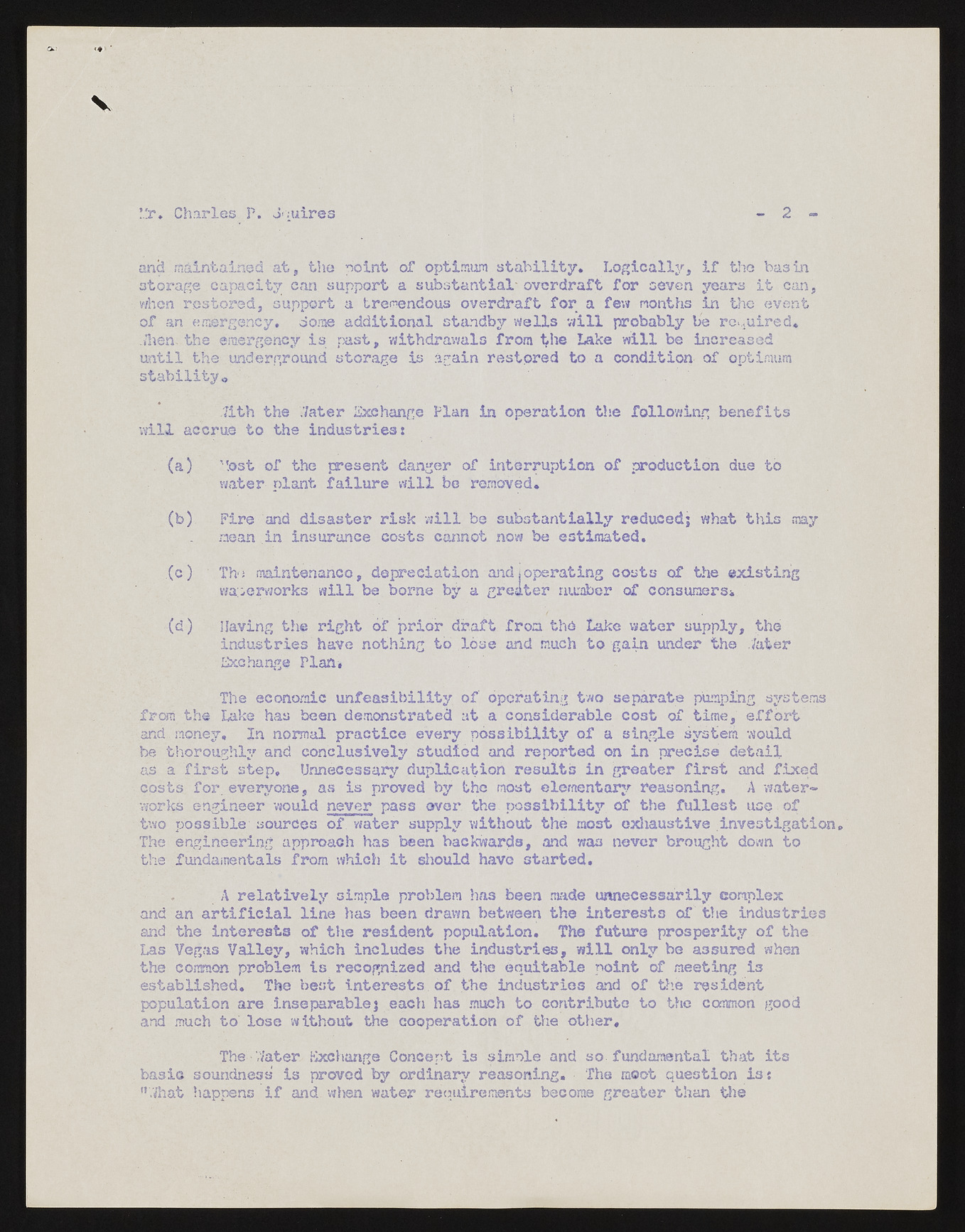Copyright & Fair-use Agreement
UNLV Special Collections provides copies of materials to facilitate private study, scholarship, or research. Material not in the public domain may be used according to fair use of copyrighted materials as defined by copyright law. Please cite us.
Please note that UNLV may not own the copyright to these materials and cannot provide permission to publish or distribute materials when UNLV is not the copyright holder. The user is solely responsible for determining the copyright status of materials and obtaining permission to use material from the copyright holder and for determining whether any permissions relating to any other rights are necessary for the intended use, and for obtaining all required permissions beyond that allowed by fair use.
Read more about our reproduction and use policy.
I agree.Information
Digital ID
Permalink
Details
More Info
Rights
Digital Provenance
Publisher
Transcription
! 'r . C h a r le s P. J 'm ir e s 2 - and maintained at, the point of optimum stability. Logically, if the basin storage capacity can support a substantial' overdraft for seven years it can, when restored, support a tremendous overdraft for a few months in the event of an emergency, dome additional standby wells will probably be required, ./hen the emergency is past, withdrawals from the Lake will be increased until the underground storage is again restored to a condition of optimum stabilityo .?ith the .Vater lixchange Plan in operation the following benefits will accrue to the industries: (a) ’lost of the present danger of interruption of production due to water plant failure will be removed. (b) Fire and disaster risk will be substantially reduced; what this may mean in insurance costs cannot now be estimated. (c) Thu maintenance, depreciation andjoperating costs of the existing waterworks will be borne by a greater number of consumers* (d) Having the right of prior draft from the Lake water supply, the industries have nothing to lose and much to gain under the ./ater exchange Plan, The economic unfeasibility of operating two separate pumping systems from the Lake has been demonstrated at a considerable cost of time, effort and money. In normal practice every possibility of a single system would be thoroughly and conclusively studied and reported on in precise detail as a first step. Unnecessary duplication results in greater first and fixed costs for. everyone, as is proved by the most elementary reasoning. A waterworks engineer would never pass over the possibility of the fullest use of two possible sources of water supply without the most exhaustive investigation. The engineering approach has been backwards, and was never brought down to the fundamentals from which it should have started. A relatively simple problem has been made unnecessarily complex and an artificial line has been drawn between the interests of the industries and the interests of the resident population. The future prosperity of the Las Vegas Valley, which includes the industries^ will only be assured when the common problem is recognized and the equitable point of meeting i3 established. The beat interests of the industries and of the resident population are inseparable; each has much to contribute to the common good and much to lose without the cooperation of the other. The water, Exchange Concept is simole and so fundamental that its basic soundness is proved by ordinary reasoning. The moot question ia: "./hat happens if and wlien water requirements become greater than the

